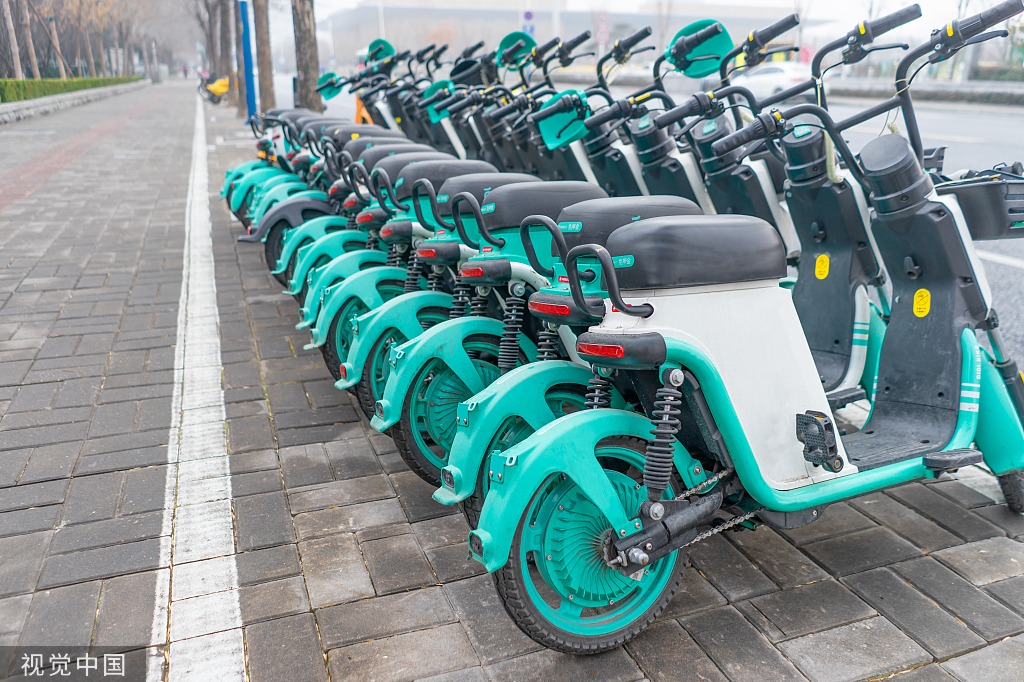Ship repair sector buoyant
By ZHONG NAN | China Daily | Updated: 2021-02-04 08:02

Companies gain from favorable policies in pilot FTZs, shutdown of foreign shipyards
China's ship repair and maintenance sector will see a robust period this year, thanks to favorable policies in the pilot free trade zones and the shutdown of several foreign shipyards for COVID-19 prevention requirements, industry experts said.
Like maintenance services for family vehicles, this kind of work is essential to keep mechanical equipment or machinery running smoothly on a ship. Be it a large structure or a small machine, efficient maintenance can prolong the life of such equipment.
Outside a facility in Zhoushan Xinya Shipyard Co, one of China's largest private ship maintenance companies located in Zhoushan, a part of the China (Zhejiang) Pilot Free Trade Zone, many large domestic and foreign vessels, including oil tankers, containers and bulk cargo ships, have been lining up for maintenance and refitting operations.
"Because of the size and complexity, it takes several days or weeks to complete each project. Due to the order surge, most of the employees can only take three or four days off in a month," said Liu Jiadong, a manager at the company. Liu said the surge in orders has improved profits and income for both the shipyard and its workers.
Apart from promoting investment facilitation and trade liberalization in the whole industrial chain of oil products, the Zhejiang FTZ, together with both domestic and overseas companies, has envisaged Zhoushan as a hub for ship maintenance services with the latest sustainable solutions in the region.
The government has to date closed 32 substandard shipyards to meet its goals, according to information released by the Zhoushan government. Total output value of maintenance services in the region for foreign ships jumped by 24.7 percent on a yearly basis to 5.51 billion yuan ($853 million).
A vessel engine room is where the majority of machines are located. Each machine on board a ship requires maintenance. It has to be carried out at regular intervals, said Mohit Kaushik, a marine engineer at Maersk Shipping, a Danish shipping company.
"Efficient planning and adequate use of equipment is the key to productive maintenance," said Kaushik, adding that the main types of maintenance procedures are preventive or scheduled maintenance, corrective or breakdown maintenance and condition maintenance services.
As many countries are still trying to mitigate the pandemic effect, a significant number of overseas shipyards have shuttered operations, and a growing number of maintenance and repair orders have shifted back to China since the second half of last year. This trend will grow further this year, said Sun Yunfei, vice-president of Shanghai-headquartered COSCO Shipbuilding Heavy Industry Co.
He said many vessels have started to request maintenance appointments six months in advance from last year. Foreign vessels accounted for more than half of these orders in its shipyards in Zhoushan, Dalian, Liaoning province, and Yangzhou, Jiangsu province.
China's ship repair industry saw complete repair work on ships surge 7 percent year-on-year over the first three quarters of 2020, and the total number of ship repairs rise 47 percent on a yearly basis, according to the China Association of the National Shipbuilding Industry.
Most of the orders Chinese companies gained in 2020 were for regular maintenance, with desulfurization system restoration and ballast water system restoration among the more specialized requests, said Chen Minjun, vice-president of the Beijing-based association.
"Such services can be fairly costly," he said, adding minor or regular maintenance usually costs between $100,000 and $150,000, while more complex processes such as desulfurization system restoration generally cost several million dollars.
In addition to the booming ship repair and maintenance industry, China's shipbuilding industry saw increased output in 2020 while maintaining the world-leading position in terms of completion volume and new and holding orders, according to latest data released by the Ministry of Industry and Information Technology.
The nation's completion volume of ships rose by 4.9 percent year-on-year to 38.53 million deadweight tons last year, accounting for 43.1 percent of the world's total.
























